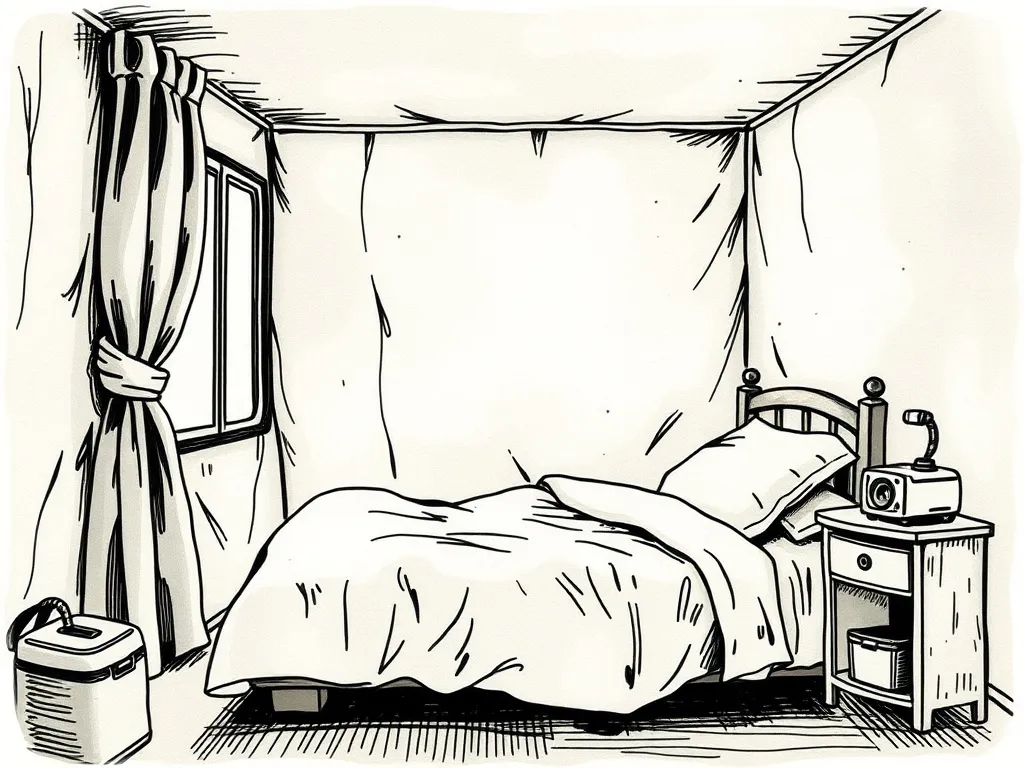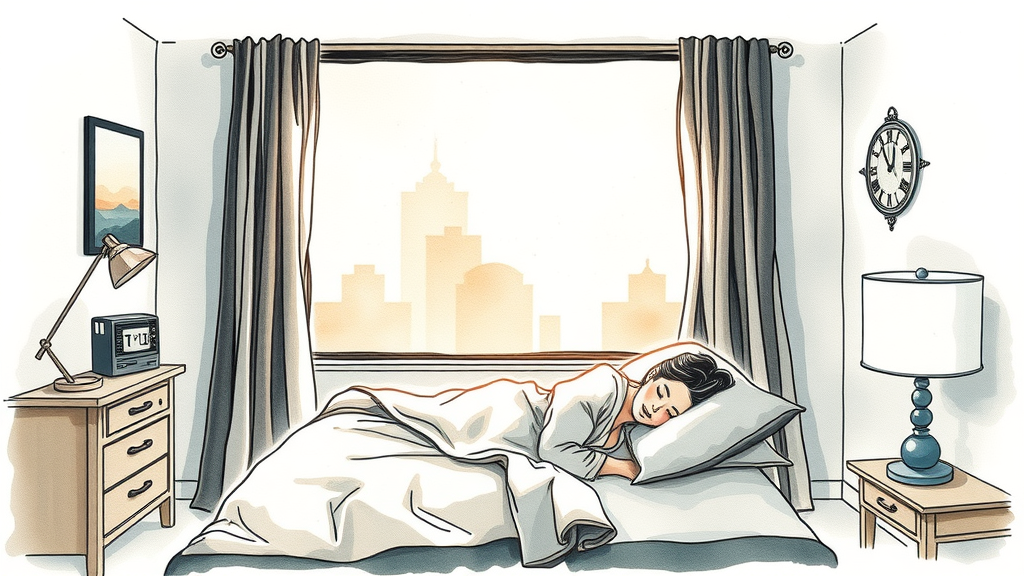· Don Schmidt · Guides · 7 min read
A CBT-I Guide for Shift Workers in Alberta's Oil and Gas Industry
Discover how CBT-I can help Alberta's oil and gas shift workers overcome insomnia, manage fatigue, and improve sleep for enhanced safety and well-being.

A CBT-I Guide for Shift Workers in Alberta’s Oil and Gas Industry
The Unique Sleep Challenges of Alberta’s Oil and Gas Shift Workers
Working in Alberta’s oil and gas industry often means challenging schedules, including long shifts, night shifts, and fly-in/fly-out (FIFO) rotations. These demanding conditions severely disrupt the body’s natural circadian rhythm, leading to widespread issues of sleep deprivation, chronic fatigue, and insomnia. Unlike conventional work, the unpredictability of site-specific demands, coupled with extreme weather, adds complexity. Workers grapple with transitioning between day and night, adjusting to camp life versus home life, and maintaining alertness during critical, safety-sensitive tasks. This constant battle against their internal clock impacts personal well-being and raises significant concerns for industrial safety. The unique environment of oil and gas sites, from noise to isolation, further exacerbates sleep difficulties, making effective sleep management crucial for worker health and operational efficiency.
What is CBT-I and How Can It Help?
Cognitive Behavioral Therapy for Insomnia (CBT-I) is an evidence-based, structured program that helps individuals identify and replace thoughts and behaviors causing or worsening sleep problems with habits promoting sound sleep. Unlike temporary sleeping pills, CBT-I addresses the root causes, offering long-lasting strategies. For shift workers struggling with sleep in Alberta’s oil and gas sector, CBT-I offers a personalized approach acknowledging their unique conditions. It focuses on transforming negative sleep associations, regulating sleep-wake cycles, and building resilient sleep routines. Key components include stimulus control, sleep restriction, cognitive restructuring, and comprehensive sleep hygiene education. Understanding how cognitive behavioral therapy for insomnia works provides deeper insight into its effectiveness for improving sleep quality and duration.
Tailoring CBT-I for Shift Workers: Key Strategies
Personalized Sleep Schedules
Developing a personalized sleep schedule is a cornerstone of effective CBT-I for shift workers. This involves strategically planning sleep around shifts, even if it means splitting sleep or adjusting routines on days off. Consistency is key, even if the “consistent” time shifts based on work rotation. For instance, a night shift worker might maintain a consistent daytime sleep schedule, making slight adjustments on days off to avoid significant “social jet lag.” This strategy often includes “anchor sleep” – a fixed period of sleep at the same time every day, regardless of shifts, to help stabilize the circadian clock.
Strategic Napping
While generally discouraged for chronic insomnia, strategic napping can be a vital tool for shift workers to manage fatigue and maintain alertness. Short, planned naps (e.g., 20-30 minutes) before a night shift can pre-empt sleepiness. “Power naps” during breaks can boost energy. The key is to avoid long naps (over 90 minutes) that cause grogginess, or naps too close to primary sleep periods that might interfere with nighttime sleep. Optimal timing and duration are crucial for maximizing benefits without disrupting overall sleep architecture.
Optimizing the Sleep Environment
Creating an optimal sleep environment is paramount, especially when sleeping during the day or in shared work camp accommodations. This includes making the bedroom as dark as possible (blackout curtains or eye masks), quiet (earplugs or white noise machines), and cool (18-20°C or 65-68°F). Minimizing blue light from screens before sleep is essential, as it suppresses melatonin production. For those in Alberta’s oil and gas fields, managing noise and ensuring a comfortable space despite limited options requires proactive strategies.
Managing Circadian Rhythm
Controlling exposure to light and darkness powerfully manages the body’s internal clock. For night shift workers, this means maximizing bright light exposure during their “waking” hours (night) and minimizing light during their “sleeping” hours (day). Using light therapy lamps can simulate daytime during the night shift, while dark sunglasses on the commute home after a night shift signal to the body it’s time to sleep. Consistent meal timing also supports circadian alignment, helping the body anticipate sleep and wakefulness effectively.
Cognitive Strategies for a Racing Mind
Many shift workers find their minds too active with work stress, safety concerns, or family planning to fall asleep, even when time allows. CBT-I addresses this through cognitive restructuring, challenging unhelpful thoughts and beliefs about sleep. Techniques like mindfulness, progressive muscle relaxation, and guided imagery help quiet a racing mind. Establishing a “wind-down” routine—reading, gentle stretching, or calming music—signals to the brain that it’s time to transition from work mode to sleep mode. For a comprehensive overview of adapting CBT-I for a shift work lifestyle, exploring these cognitive approaches is essential.
Nutrition and Hydration
What and when you eat and drink significantly impacts sleep quality. Avoiding heavy meals, excessive caffeine, and alcohol close to bedtime is crucial, especially for night shift workers whose “bedtime” might be morning. Caffeine should be consumed strategically and tapered off several hours before planned sleep. Staying well-hydrated throughout shifts is important, but fluid intake should be reduced closer to sleep to avoid nocturnal awakenings. Optimizing diet with balanced meals rich in sleep-promoting nutrients further supports healthy sleep patterns. For more in-depth insights into advanced sleep therapy techniques for shift work, consider how nutritional strategies integrate into a broader CBT-I plan.

Overcoming Barriers: Implementing CBT-I in a Demanding Industry
Implementing CBT-I strategies in Alberta’s demanding oil and gas industry presents unique challenges. Access to quiet, dark, and cool sleeping environments can be difficult in remote camps. Peer pressure to socialize or participate in activities during off-shift hours can also interfere with sleep routines. Employers can play a vital role by providing better sleep facilities, offering educational programs, and promoting a culture that values rest. Telemedicine and online CBT-I programs offer accessible solutions for workers in remote locations, allowing therapy engagement regardless of physical proximity to urban centers.
The Broader Impact: Safety, Well-being, and Productivity
Addressing sleep issues through CBT-I for Alberta’s oil and gas shift workers has far-reaching benefits. Improved sleep quality directly translates to enhanced alertness and decision-making, significantly reducing workplace accidents and improving industrial safety. A well-rested workforce is more productive, with better concentration, problem-solving, and reduced absenteeism. Mitigating chronic sleep deprivation also profoundly impacts mental health, reducing stress, anxiety, and depression commonly associated with shift work. It fosters a more resilient and healthier workforce, benefiting both individuals and the industry.
Seeking Professional Help
While many CBT-I principles can be self-implemented, consulting a sleep specialist or a therapist trained in CBT-I is highly recommended for persistent sleep problems. They provide tailored assessments, personalized strategies, and ongoing support to navigate shift work sleep complexities. Many health professionals in Alberta are familiar with the unique needs of industrial workers and can offer specific guidance or referrals.
Conclusion
Navigating the sleep challenges inherent in Alberta’s oil and gas industry is a significant hurdle for many shift workers. However, Cognitive Behavioral Therapy for Insomnia offers a powerful, evidence-based pathway to better sleep and improved overall well-being. By understanding the unique demands of their work and applying tailored CBT-I strategies, workers can take control of their sleep, enhance their safety on the job, and lead healthier, more fulfilling lives. Prioritizing sleep is not just a personal choice; it’s a critical investment in the health of individuals and the safety and productivity of the entire industry.
Frequently Asked Questions (FAQ)

Q1: Can CBT-I really help if my shifts constantly change?
A1: Yes, CBT-I is highly adaptable. It focuses on strategies like strategic napping, light exposure management, and optimizing your sleep environment to minimize disruption and promote sleep quality, even with fluctuating schedules. The goal is to build resilience in your sleep patterns.
Q2: How long does it take for CBT-I to show results?
A2: Many individuals experience noticeable improvements within 4-8 sessions, typically over 6-12 weeks. Individual progress varies, and sustained commitment to the strategies is key for long-term benefits.
Q3: Is CBT-I covered by health insurance in Alberta?
A3: Coverage varies by your specific health insurance plan and whether it’s delivered by a registered psychologist or other recognized healthcare professional. Check with your insurance provider to understand coverage options.
Q4: What if I share accommodations in a work camp? Can I still do CBT-I?
A4: Absolutely. While private, quiet spaces are ideal, CBT-I emphasizes adapting strategies. This might involve using earplugs, eye masks, portable white noise machines, and communicating with roommates about sleep needs. Even small adjustments can make a significant difference.
Q5: Can CBT-I help reduce my reliance on sleep aids?
A5: Yes, a primary goal of CBT-I is often to reduce or eliminate reliance on sleep medications. By addressing underlying behavioral and cognitive factors, CBT-I empowers individuals to achieve natural sleep without external aids.
Assess Your Sleep Quality Today
Take our My Sleep Health Score assessment to get personalized insights about your sleep patterns and discover how CBT-I can help you achieve better sleep.

Don Schmidt
15+ years of experience in sleep therapy and Cognitive Behavioral Therapy for Insomnia (CBT-I). Passionate about connecting individuals struggling with sleep disorders to evidence-based, non-medical treatment solutions. Author of hundreds of articles and comprehensive guides on sleep health, CBT-I techniques, and overcoming insomnia. When not helping clients achieve better sleep, you can find me hiking with my family and dogs or enjoying a good book.
Ready to connect with a provider?
Allow us to connect you with a provider who can help.



